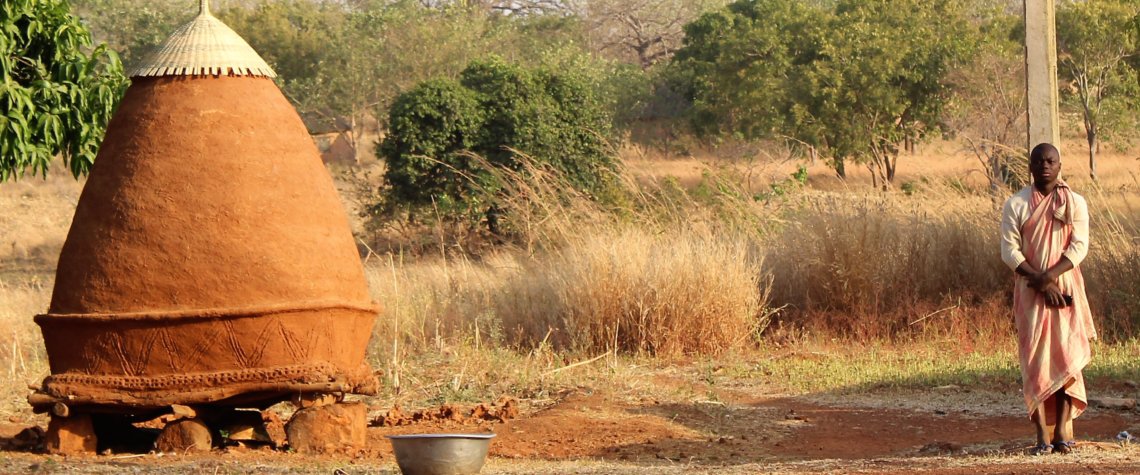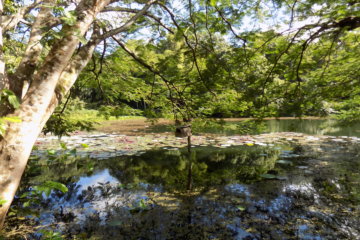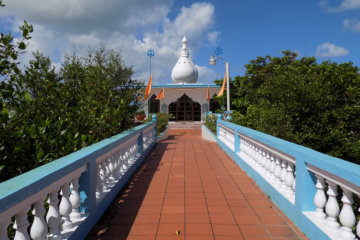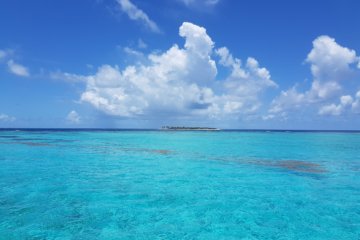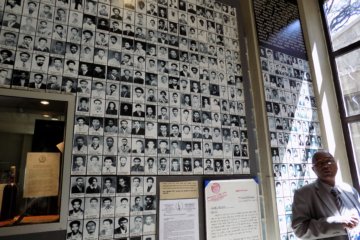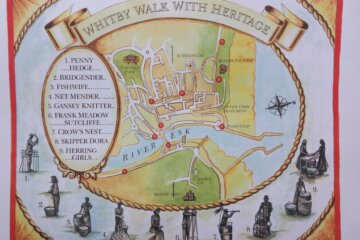The Tata Somba Region, declared a World Heritage Site in 2004, is located in the Atakora Mountains in northern Benin and Togo. It is little-visited and yet has one of the best examples of local architecture found anywhere on the African continent. There are few roads in the area and no public transport, so the people remain largely isolated. The Betammari-be people, also known as Somba, who live here, find themselves inhabiting two different countries thanks to the total disregard shown to them by the colonialists who drew up the country borders. Luckily for us, we got to visit the region on our recent West Africa Tour.
In this article
The Somba People
Somba people make up 8% of Benin’s population. They follow traditional animist religions and maintain the hunting and warrior lifestyle of the past. They are very proud of their culture. By nature, they are isolationists. They tend to stick to family groups, rather than making friends in the wider community.
The Somba have body scarring rituals which begin when a child is only two. These cuts to the face, stomach and back are a lifelong identity card – ‘the Somba passport’, if you like. The scars serve to show which tribe the person originates from, as well as more coded personal information. More marks are added in puberty, before marriage and after childbirth.
Some Somba children go to school, but many do not. Education is not compulsory and, often, schools are too far away for these isolated children to attend.
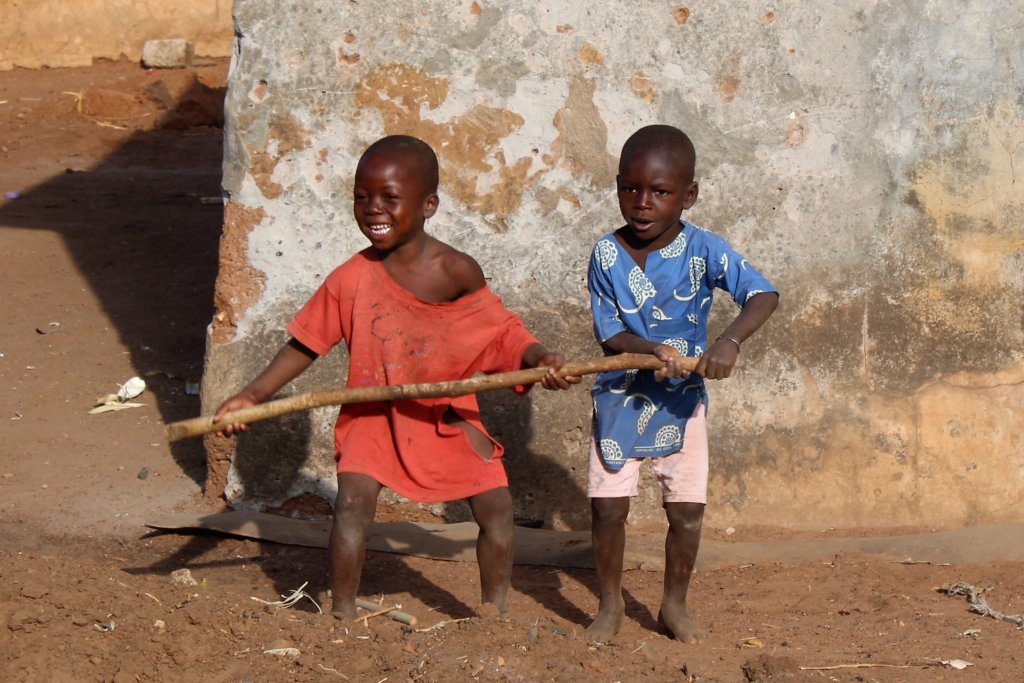
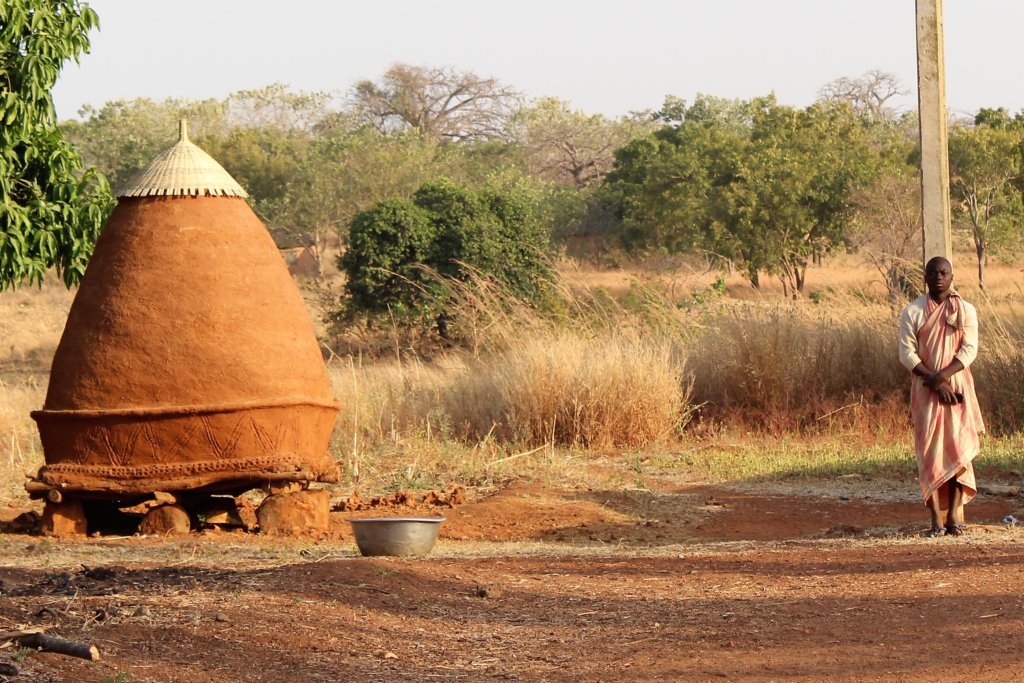
The Tata Somba
Tata Somba means ‘house of the Somba’. These dwellings are fortified mud houses, usually two-storey, often hidden from view by lush vegetation. Every tata somba is home to one family, its dimensions being a sign of the owner’s status.
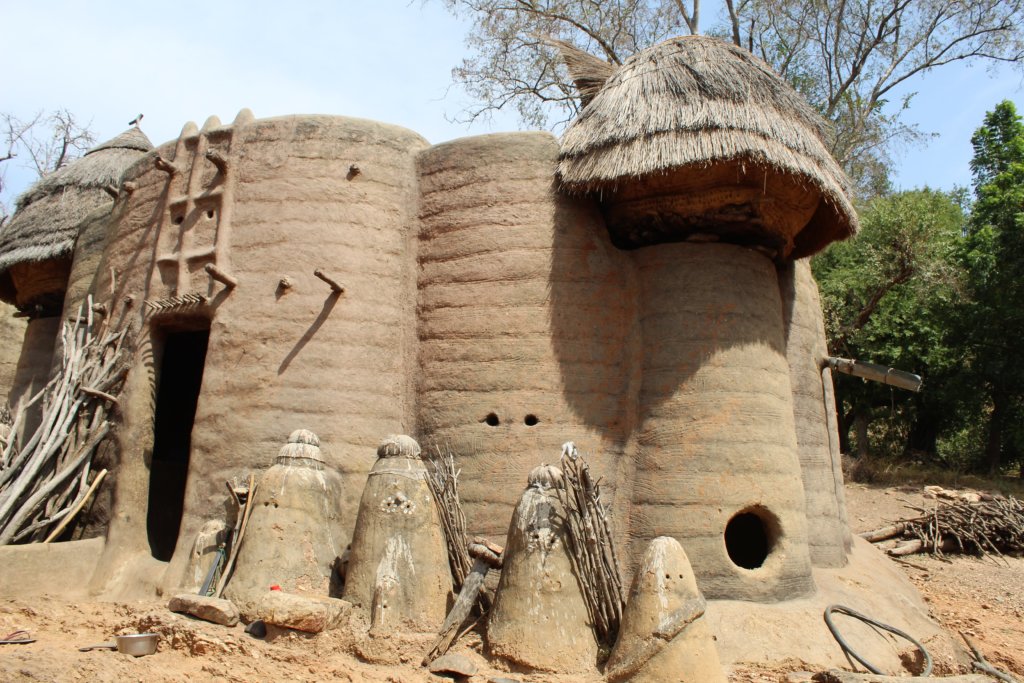
History
Tata Somba developed in the 18th century when the peoples of the Fada N’Gourma region in Burkina Faso found refuge in the Atakora Mountains from invading Mandingo and Songhai groups who tried to convert them to Islam.
Later, these houses helped repel attacks from the Ashanti who were looking to capture people to sell as slaves. Later still, they were a refuge against German colonisers.
Design
The houses are built as small fortresses with a number of towers connected by a wall up to four metres high. Each tata somba is a symbolic representation of the family.
There is one door, often decorated with hunting trophies (skulls, bones and antlers) to ward off evil spirits, which opens onto a short dark corridor, aimed at deterring potential attackers. This leads to a large room where animals are kept at night. To the side is a smaller room where grains are pounded during the day and where the head of the family sleeps at night.
Beyond this room is the kitchen with a fireplace which heats the whole house. It is very dark and very hot. We passed through one of these rooms with most of our group (me included) not realising that there was a lady and her children in there. An opening in the wall provides some light and access to a small terrace. From here, a ladder leads to the main terrace where the family live.
There are a number of towers around the main terrace; some are stores, others are bedrooms. There are also some low round huts that are used as extra bedrooms. The area between the huts is used as an open-air kitchen in the dry season.
The main terrace is 3.5 to 4.5 metres from the ground. Small walls partition the area and there are gutters to drain rainwater away. It is a sacred space with small altars at the entrance to each room. These are kept fed with fetishes, like bird feathers or animal blood, that look after the wellbeing of the family. There is a separate altar for each person living in the house.
The entrance of a tata somba is always directed towards the west, the direction the people came from when they first arrived here. By tradition, spaces in the north of the house are reserved for women, while men conduct their business in the southern parts of the building.
The walls of a tata somba are decorated with patterns etched into the mud when it is still wet. These patterns replicate the body scarring marks of the head of the household.
Traditionally, there are no villages in Somba culture. Houses are built away from each other in keeping with the character of the people.
When a young man wants to marry, he has to build his tata. He throws an arrow from the entrance of his family house. Where it lands is where he’ll build his own place. Before building, though, he must first cleanse the area of evil spirits. The tata is then built using wood, hay and banco, a mix of clay, mud and cow dung. Women carry water and mud from the river while the men build.
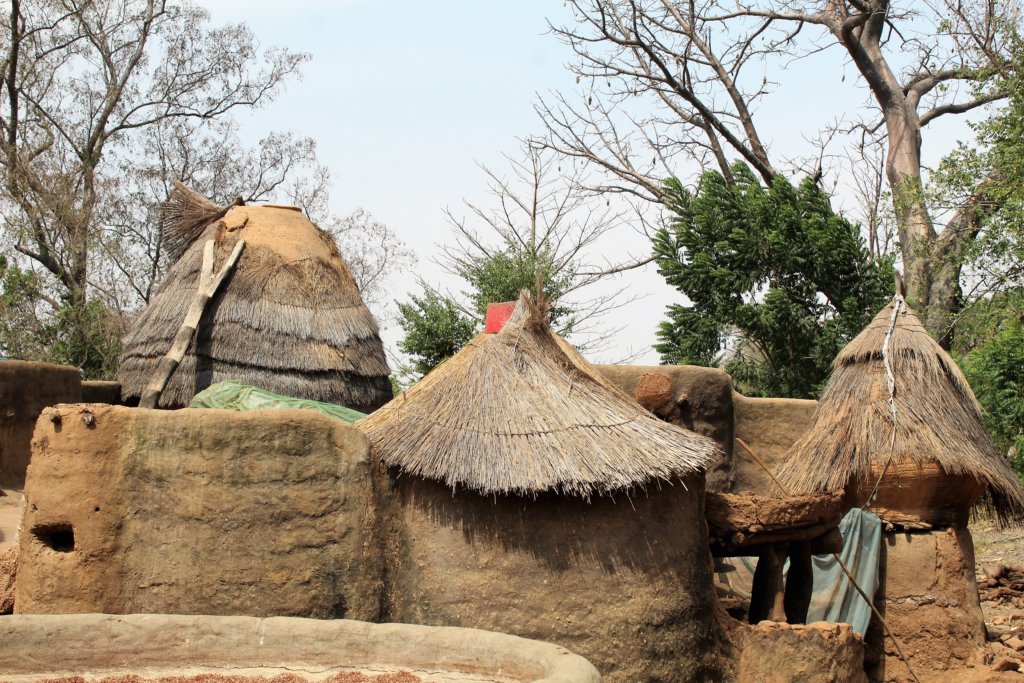
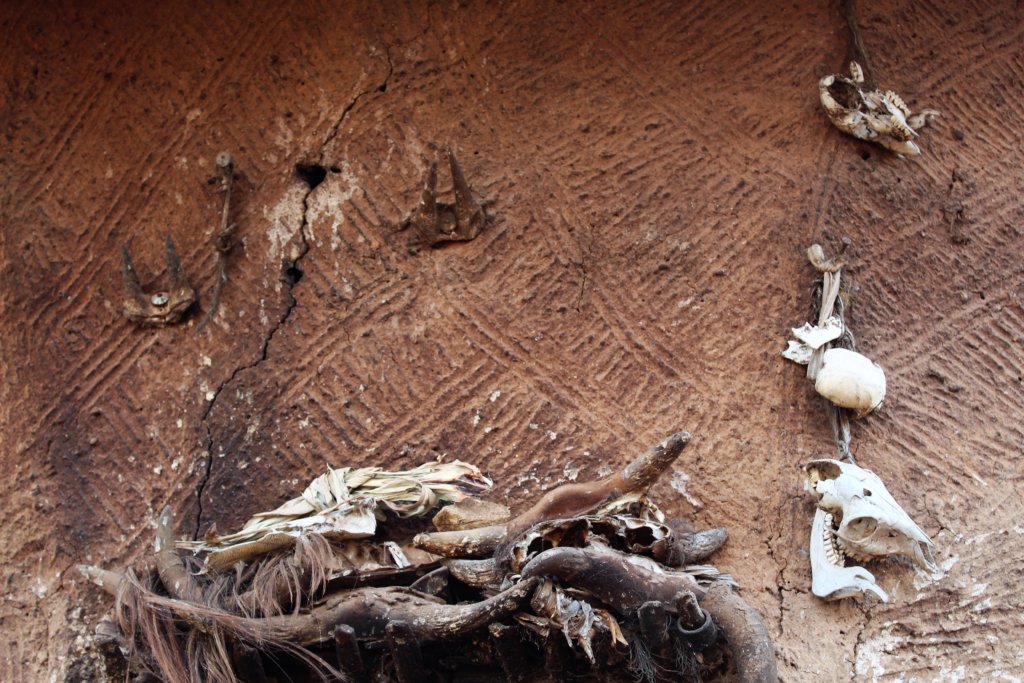
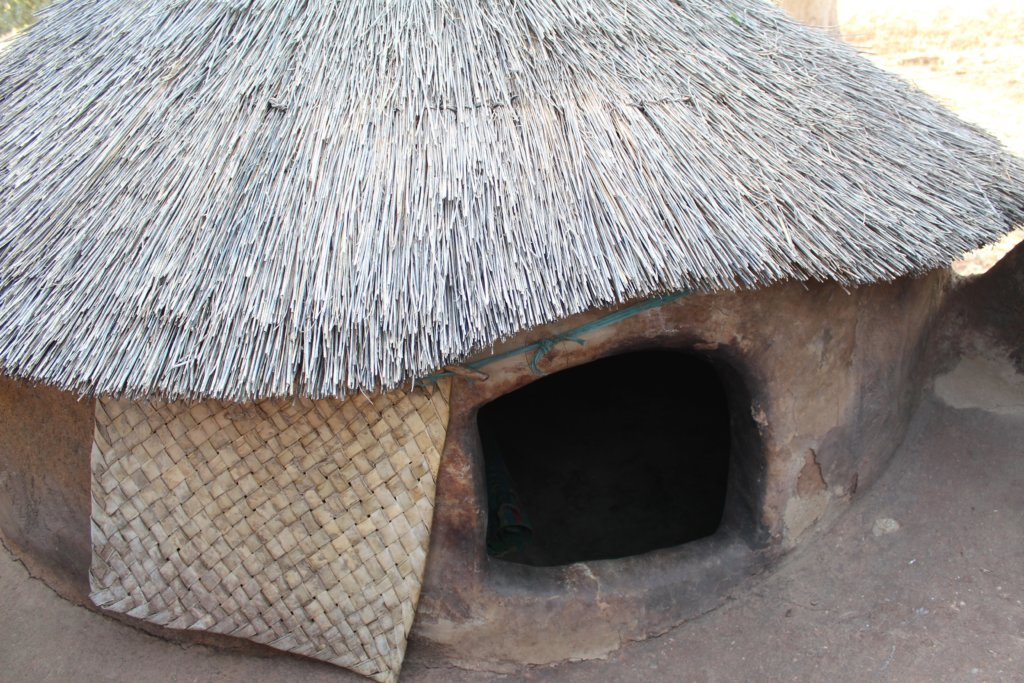
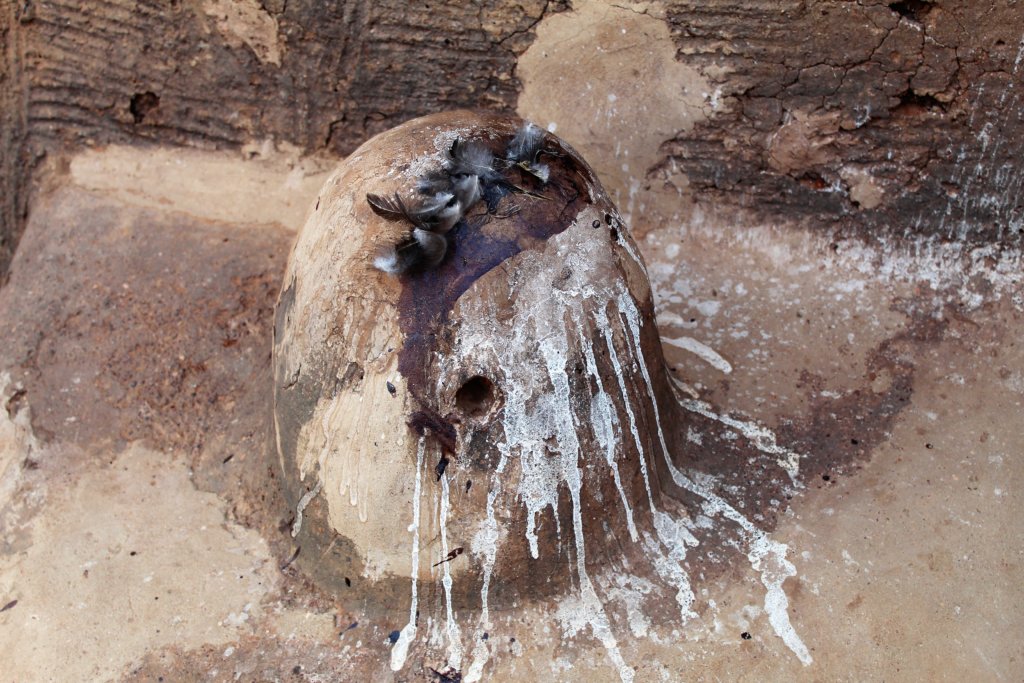
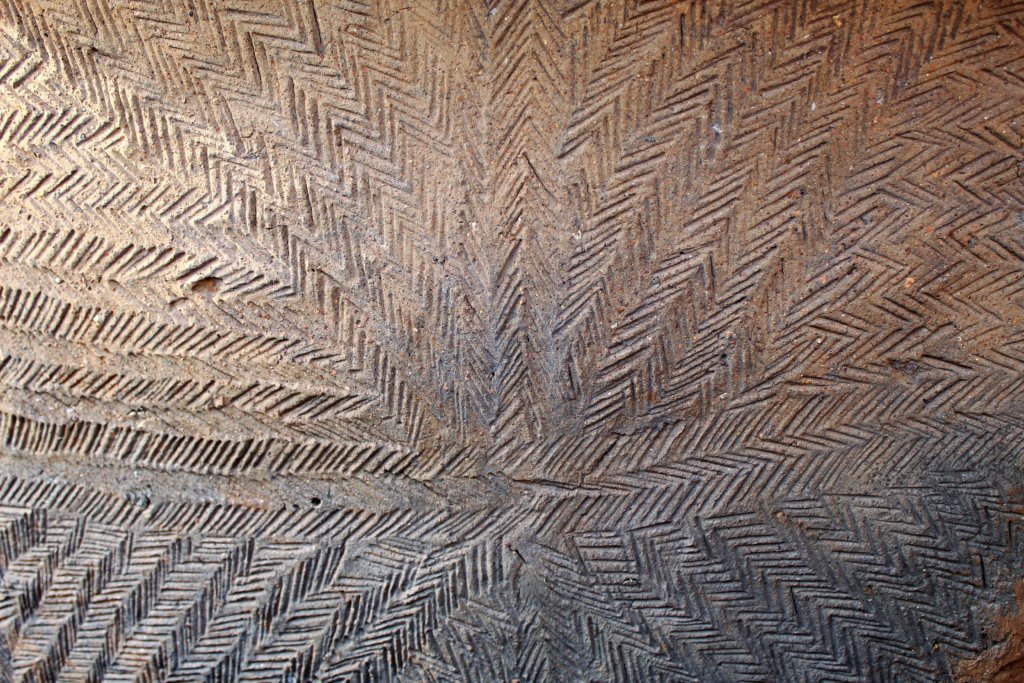
The Tata Somba Region in the 21st Century
There is no doubt that the modern world is reaching the Tata Somba region. Some people have replaced the traditional houses with small brick-built buildings topped with metal roofs. Increasing numbers of young people are leaving their families and going to the cities. There is also a growth in tourism which has not always had a beneficial effect on local people.
We visited two areas in the region, one in Togo and one in Benin. The differences we found could not have been more marked!
A Visit to a Somba Area in Togo
As we entered the Tata Somba national park in northern Togo, we had to stop to buy entry tickets and to pick up a park-appointed guide to accompany us to the Benin border. He directed us to stop in a place where Somba people live and where we could visit one of their houses. It turned out to be absolute chaos – not a pleasant experience at all!
We set off as a group to walk up to the house. We were hassled by locals trying to sell us things, or simply demanding money, the second we stepped off the truck. A lady was spinning cotton by hand a little way away from the crowd. I asked her if I could take her photo. She readily agreed but, after I had, she grabbed my arm and said I owed her money. This set the tone!
No-one had said what kind of walk it would be and I was wearing totally inappropriate footwear, so half-way up the hill, I handed the camera to Mark and made my way back to the truck. I got talking to Maurice and Ikombo, two young boys, about school. They attend school from Monday to Friday, walking 7km each way for only 2 hours of lessons a day. They are already learning some English and were proud to show me they could count to 200, as well as have basic conversations. They asked me for pens for school. I told them I had some on the truck. By the time we got to the truck, another of our group was being hassled by a huge group of locals. There were 30 or 40 of them all screaming at her for money, water, food, or all three. It was clear that it wouldn’t be so easy just to give the boys the pens. It was pandemonium!
When Mark and the others came back, they said it had been the same for them. They hadn’t been told anything by the guide. Instead, they had been pestered for the whole time they’d be gone. We have had many situations in other parts of the world where we’ve been asked for money and pens, but never in such an aggressive and relentless way. As this was organised by a government guide and not by our tour operator, Dragoman, our leader, Katie, said she would advise future groups not to make the stop.
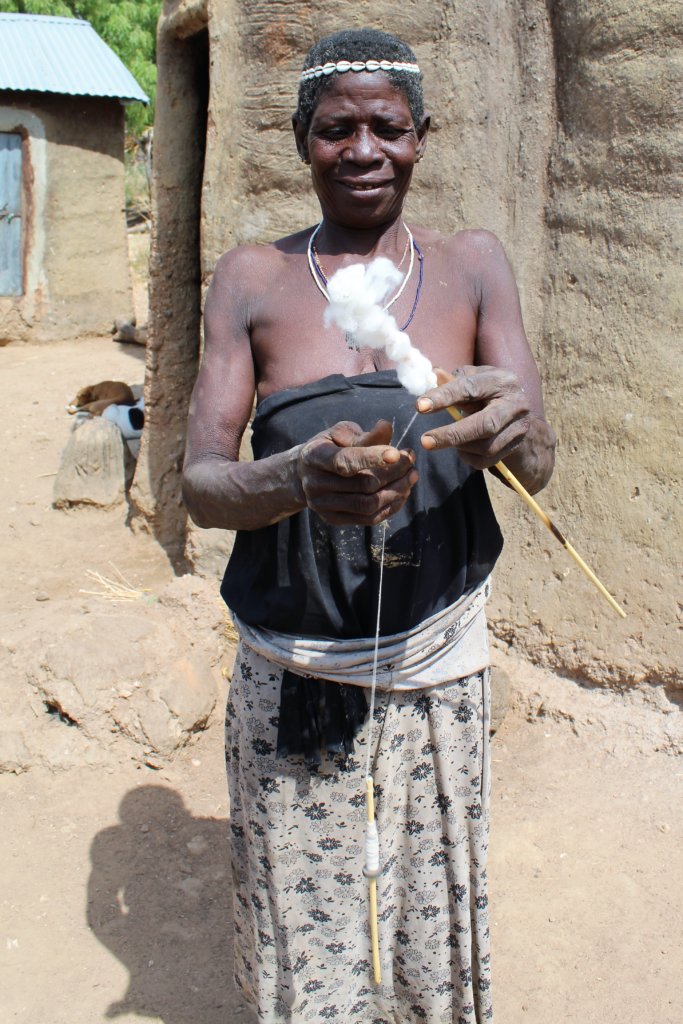
A Visit to a Somba Area in Benin
Following our unpleasant experience in Togo, we crossed the border into Benin. It wasn’t far to drive to our accommodation for the next couple of nights, an eco-lodge built in the style of a tata somba. We catered for ourselves off the truck but stayed in round rooms with bucket showers en-suite and a shared composting toilet.
The Somba people we visited here were living in an environment that resembled a village, though there were no shops or communal social or sporting activities. The only community space was a Roman Catholic church built by missionaries in 1953. Local people do attend but they still follow their animist beliefs as well. They embrace some aspects of modernity but try to preserve their traditional way of life. They accept a limited number of tourist visitors, even offering overnight stays in a tata somba!
Our guide was a Somba man who was happy to explain to us about his body scarring and to allow us to take photos of his face. He explained all about the local way of life (in French – Tina and I translated) and the indigenous trees and plants, including a sacred baobab tree with a hollow trunk large enough to accommodate our entire group. It was so interesting to see inside a traditional tata somba with the family who live there and a local guide to explain what we were seeing. What a difference from the previous day!
On the main terrace of this house there were three grain stores; one for the head of the household, one for the mother, and one for the children. These are accessed through a hole in the roof via a makeshift ladder. The hole is topped with a removable ‘hat’ which has a bell attached to its inside, so if a burglar tried to steal any grain, the family would hear him. The grain stores have three separate compartments for the different types of grain. These stores are also where the family keep their money and any other valuables.
Following the harvest, the grain in the mother’s store is used first, then the children’s, and finally the father’s. He can then ration the grain he gives to his wife for cooking so that the family doesn’t run out before the next harvest.
From the house, we walked through the village to a viewpoint from where we could see some of the huge Chinese-funded road building projects which will surely change this area immeasurably.
Our last port of call was the village school. We visited two classrooms where the students had prepared songs for us. We reciprocated with impromptu performances of our own – ‘Old MacDonald had a Farm’ for the older ones and ‘Head, Shoulders, Knees and Toes’ for the little ones. I think ‘bemused’ best describes their reaction! The headmaster then showed us the boarding houses where the boys and girls who live some distance away stay during term time. This facility, rare in the area, was funded by Lions International.
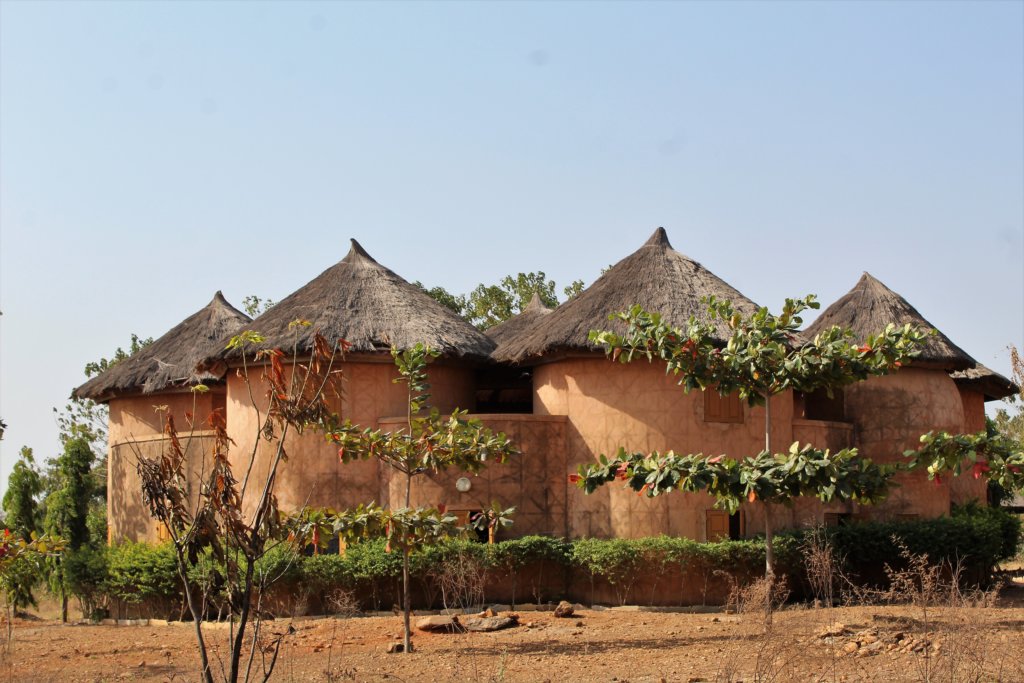
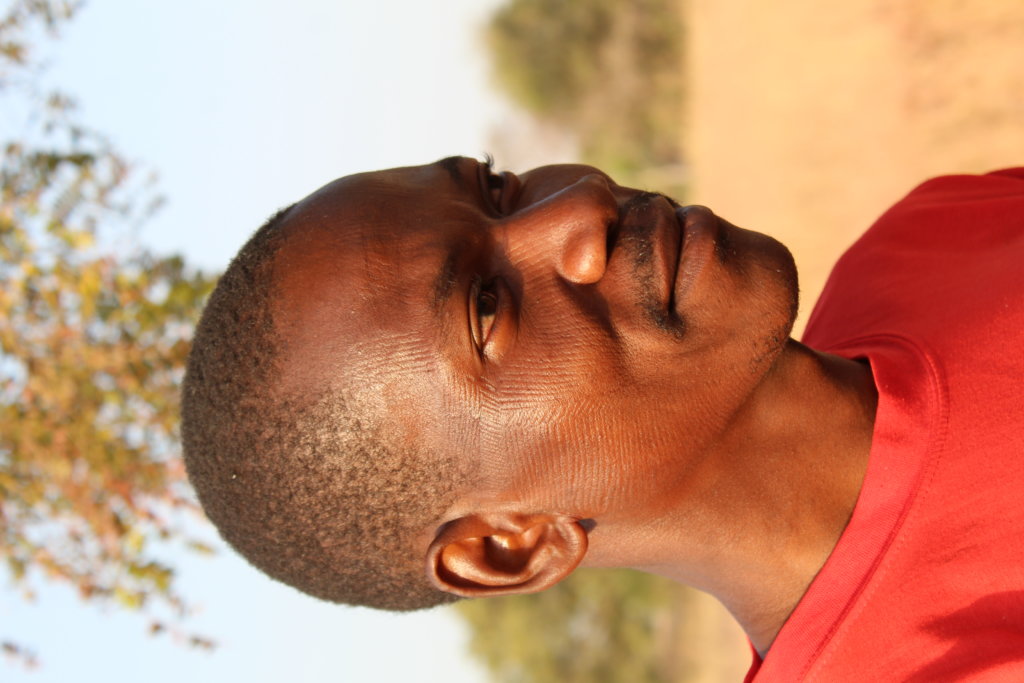
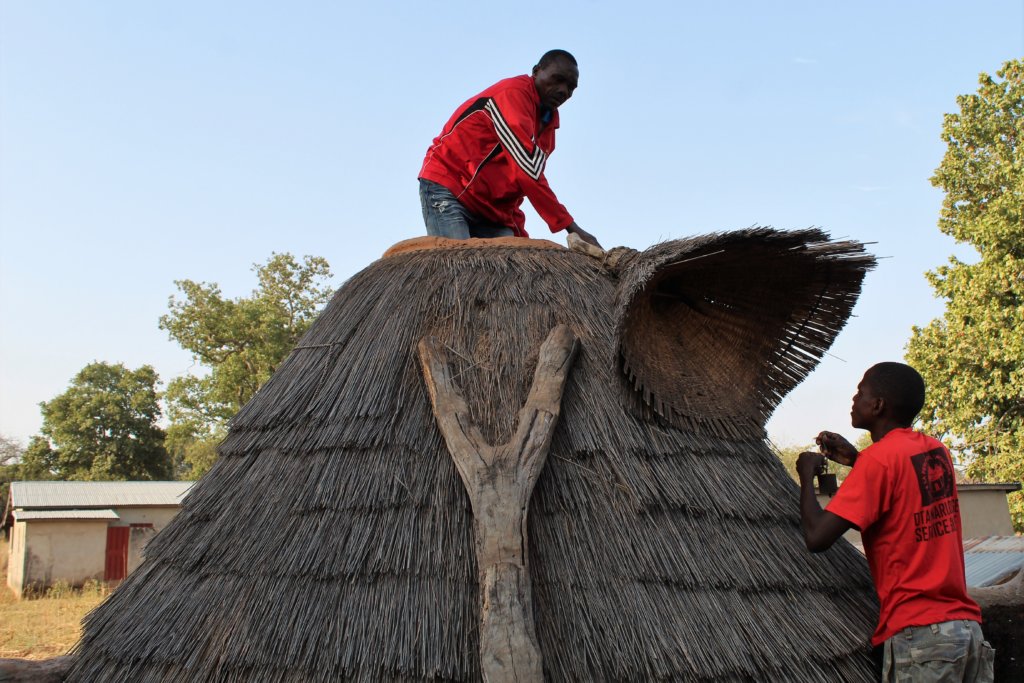
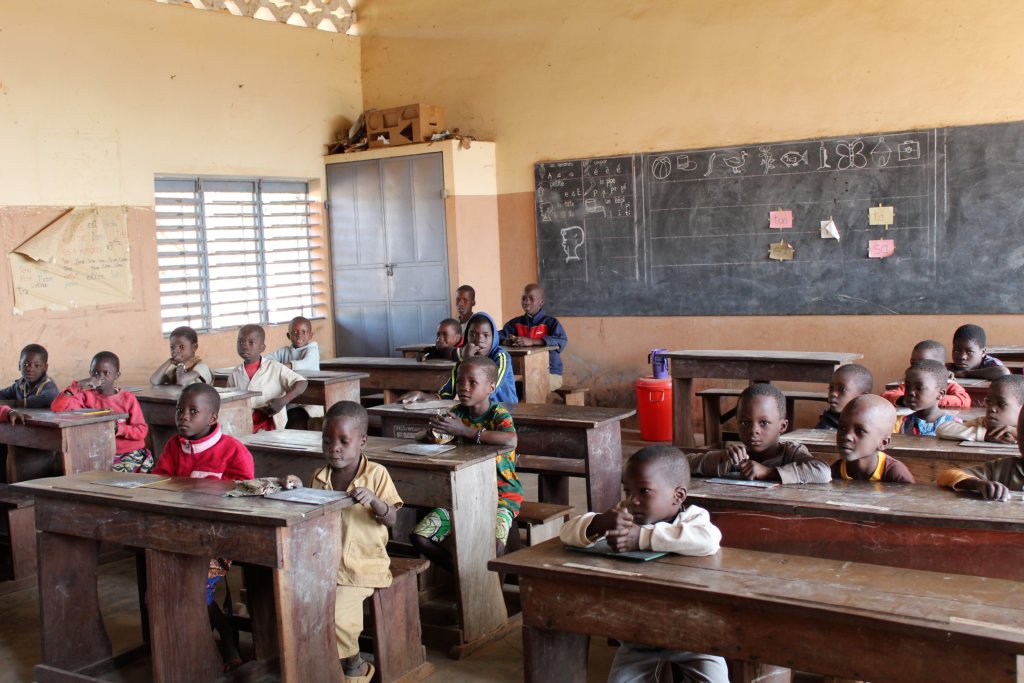
CLICK HERE TO READ MY BENIN TRAVEL GUIDEREAD MY COMPLETE TOGO TRAVEL GUIDE
BUY A GUIDEBOOK OR A COLOURING BOOK:
BOOK YOUR OWN WEST AFRICA TOUR NOW!
IF YOU LIKE WHAT YOU’VE READ, PIN IT!!
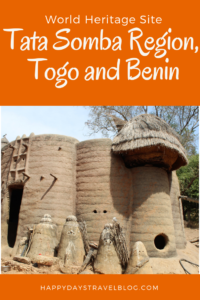
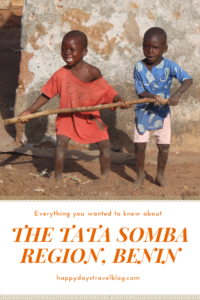
Disclosure: This post contains affiliate links. If you click through for more information, or to make a purchase, it may result in a small commission coming my way. Please note that there is no extra cost to you associated with this. Thank you so much for supporting my site.
Join our mailing list

Sign up to receive our monthly newsletter. Keep up with what we're doing and be the first to receive special offers and insider tips.

